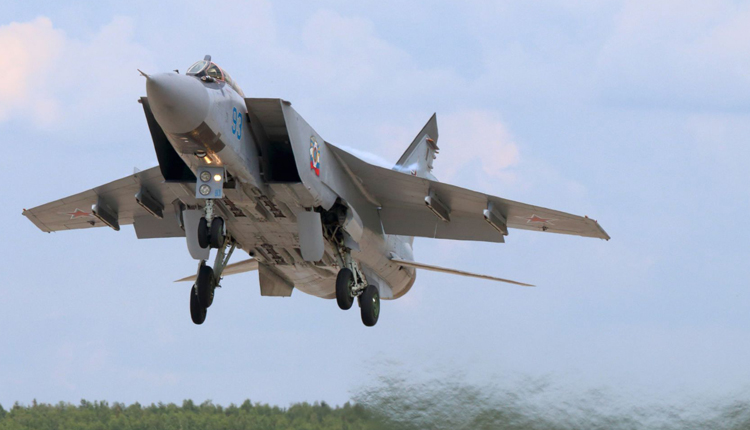A Russian missile the U.S. is currently unable to defend against will likely be ready for combat as early as 2020, according to people who have direct knowledge of the U.S. intelligence reports.
The people, who spoke to CNBC on the condition of anonymity, said Russia successfully tested the air-to-ground hypersonic missile three times.
The third known test of the device, dubbed “Kinzhal,” meaning “dagger,” was successfully carried out earlier this month against a target nearly 500 miles away.
The U.S. intelligence report, according to a source, noted that the hypersonic missile was tested 12 times on a Russian MiG-31 fighter jet, but work is currently underway to mount the missile on a strategic bomber.
The latest revelations come as President Donald Trump prepares to meet his Russian counterpart, Vladimir Putin, in a much-hyped summit Monday in Helsinki.
By all accounts, the newly announced weapons are a significant addition to the Kremlin’s arsenal that could create new fears over a budding arms race.
Trump said Friday he would discuss reducing nuclear weapons when he meets Putin in Helsinki.
“If we can do something to substantially reduce them, I mean, ideally get rid of them, maybe that’s a dream, but certainly it’s a subject that I’ll be bringing up with him,” Trump said. “The proliferation is a tremendous, I mean, to me, it’s the biggest problem in the world, nuclear weapons, biggest problem in the world.”
Meanwhile, America’s top nuclear commander has described a grim scenario for U.S. forces facing off against these new types of high-speed weapons that both Russia and China are developing.
“We don’t have any defense that could deny the employment of such a weapon against us,” Air Force Gen. John Hyten, commander of U.S. Strategic Command, told the Senate Armed Services Committee in March. This means that, as of now, the U.S. has to rely on deterrence against these so-called hypersonic weapons, he said.
“Both Russia and China are aggressively pursuing hypersonic capabilities,” Hyten said. “We’ve watched them test those capabilities.”
Hyten’s comments came weeks after Putin touted his nation’s hypersonic weapons as “invincible” during a state-of-the-nation address. The Russian president bragged in March that his country had a new nuclear-powered missile with unlimited range— but it has yet to perform a successful test over multiple attempts, according to people with direct knowledge of a U.S. intelligence report on the weapons program.
The cruise missile was tested four times between November and February, each one resulting in a crash, according to people who spoke to CNBC on the condition of anonymity.
The U.S. assessed that the longest test flight lasted just more than two minutes, with the missile flying 22 miles before losing control and crashing. The shortest test lasted four seconds and flew for five miles.
However, in May, CNBC learned the hypersonic glide vehicle, which is designed to sit atop an intercontinental ballistic missile, will be ready for war by 2020.
The sources, who spoke to CNBC on the condition of anonymity, said Russia successfully tested the weapon, which could carry a nuclear warhead, twice in 2016.
The third known test of the device was carried out in October 2017 and resulted in a failure when the platform crashed seconds before striking its target.
Meanwhile, the Russians are expected to conduct a fourth test sometime this summer.
Source: CNBC



